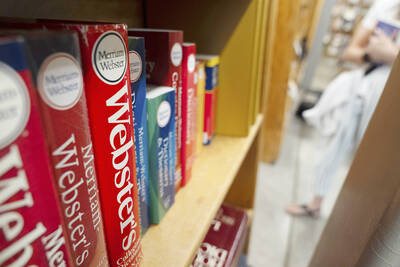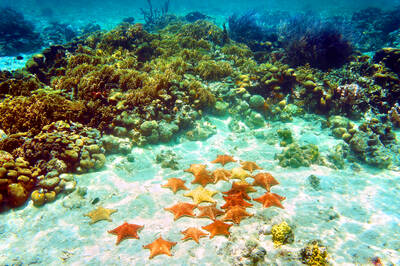對話 Dialogue
小實:馬克,拿毛筆和拿原子筆的方式不一樣哦,你看!
Xiǎoshí: Mǎkè, ná máobǐ hàn ná yuánzǐbǐ de fāngshì bù yíyàng ó, nǐ kàn!

馬克:食指、中指……這樣拿筆,好難寫字。
Mǎkè: Shízhǐ, zhōngzhǐ... zhèyàng ná bǐ, hǎo nán xiězì.
小實:所以才要練習啊!你可以先看這個字帖。
Xiǎoshí: Suǒyǐ cái yào liànxí a! Nǐ kěyǐ xiān kàn zhège zìtiě.
馬克:「字帖」?你要我照著這個字來寫嗎?
Mǎkè: “Zìtiě”? Nǐ yào wǒ zhàozhe zhège zì lái xiě ma?
小實:對,這些都是有名的書法家的字帖。
Xiǎoshí: Duì, zhèxiē dōu shì yǒumíng de shūfǎjiā de zìtiě.
馬克:小實,我想學那種像蛇一樣的書法風格,很漂亮吔。
Mǎkè: Xiǎoshí, wǒ xiǎng xué nàzhǒng xiàng shé yíyàng de shūfǎ fēnggé, hěn piàoliàng ye.
小實:哦,那是「草書」,不過我們應該從楷書開始學習。
Xiǎoshí: Ó, nà shì “cǎoshū”, búguò wǒmen yīnggāi cóng kǎishū kāishǐ xuéxí.
馬克:好吧!我先練習拿毛筆和寫楷書。
Mǎkè: Hǎo ba! Wǒ xiān liànxí ná máobǐ hàn xiě kǎishū.
翻譯 Translation
Xiaoshi: Mark, see? The way you hold a Chinese brush and a ballpoint pen are different.
Mark: Forefinger, middle finger …holding the pen like this makes it difficult to write.
Xiaoshi: That’s why we need to practice! You can follow these “zitie” (copybook) first.
Mark: “Zitie?” Do you want me to write the characters according to this copybook?
Xiaoshi: Yes, these are copybooks by famous calligraphers.
Mark: Xiaoshi, I want to learn that snakelike calligraphy style, it’s beautiful.
Xiaoshi: Oh, that’s “cursive script,” but we should start learning from regular script.
Mark: OK! I will practice holding the brush and writing regular script first.
單字片語 Vocabulary
1. 毛筆 máobǐ Chinese calligraphy brush
2. 原子筆 yuánzǐbǐ ballpoint pen
3. 食指 shízhǐ forefinger, index finger
4. 字帖 zìtiě copybook
5. 照(著)zhào (zhe) according to; accordingly
6. 書法家 shūfǎjiā calligrapher
7. 風格 fēnggé style
8. 草書 cǎoshū cursive script
9. 楷書 kǎishū regular script
教材音檔 Audio Files
教材影片 Video Files:
https://www.instagram.com/celc.nou_tw/guide/_/17999106352646292/
實踐大學華語中心提供
By Shih Chien University Chinese Language Center: https://chineseusc.com/

In English, “name idioms” are part of what makes English fascinating. Let’s put a few examples under the microscope. Doubting Thomas This expression stems from the Bible. Thomas, one of Jesus’s disciples, refused to believe Jesus had been resurrected from the dead. He declared he wouldn’t accept it until he could see the nail marks in Jesus’s hands and touch his wounds himself. Today, this idiom refers to someone who won’t believe something without concrete evidence. For instance, if your friend’s expertise is reliable, but you’re still suspicious, you might be a “doubting Thomas.” Smart Aleck The origin of this phrase likely comes from

A: Hey, the world’s major dictionaries just unveiled their words of the year for 2025. B: Yup, the Cambridge Dictionary chose the word “parasocial,” which refers to a connection that someone feels between themselves and a famous person they don’t really know. A: One-sided parasocial relationships with celebrities, influencers and even AI chatbots have clearly become more common. B: The Oxford Dictionary picked “rage bait” — online content designed to elicit anger by being frustrating, provocative or offensive in order to increase traffic to Web sites or social media accounts. A: The Collins Dictionary picked “vibe coding.” Let’s

A: Apart from the world’s major dictionaries, the online Dictionary.com actually picked “67” as its word of the year. B: What does “67” even mean? A: Even the dictionary wasn’t exactly sure about its meaning. The slang term’s origin might be traced to US rapper Skrilla’s song Doot Doot (67). Aren’t Taiwanese media outlets choosing the Mandarin word for 2025? B: Yeah and after hearing the song Good-for-Nothing, adapted from some catchphrases of Legislator Wang Shih-chien, I’m going to vote for the character “tsung” (hasty) from the lyrics. A: Hopefully, in the new year, we’ll be calm as the

Sea star wasting disease (SSWD) is a strange and serious illness affecting sea stars, or starfish. This disease causes sea stars to develop painful lesions, lose their arms, and eventually turn into a gooey, melted mess. Since it was first observed in 2013, millions of sea stars along the Pacific coast of North America have died from this __1__. Although viruses were once considered a possible cause, researchers now believe that environmental stressors and microorganisms are primarily __2__ for sea star wasting disease. One of the main environmental triggers appears to be warmer ocean water. When the water heats